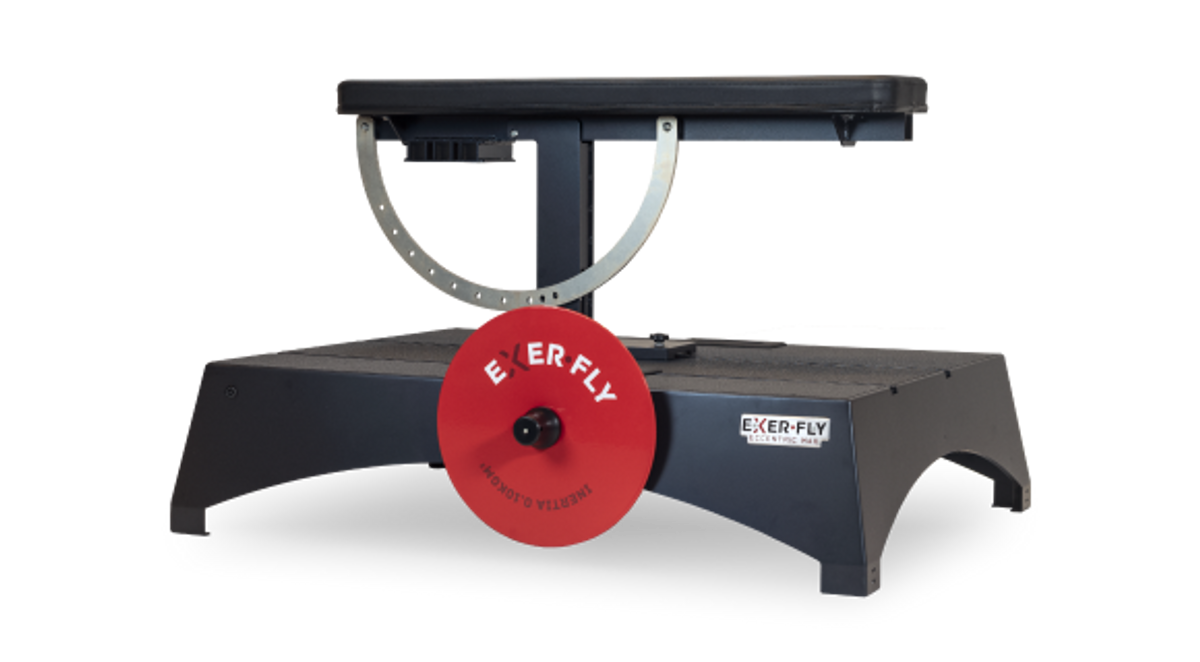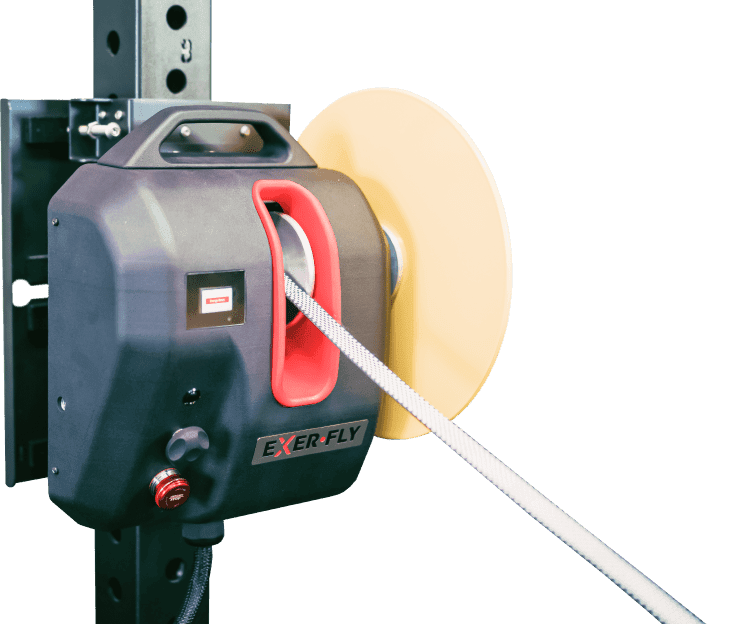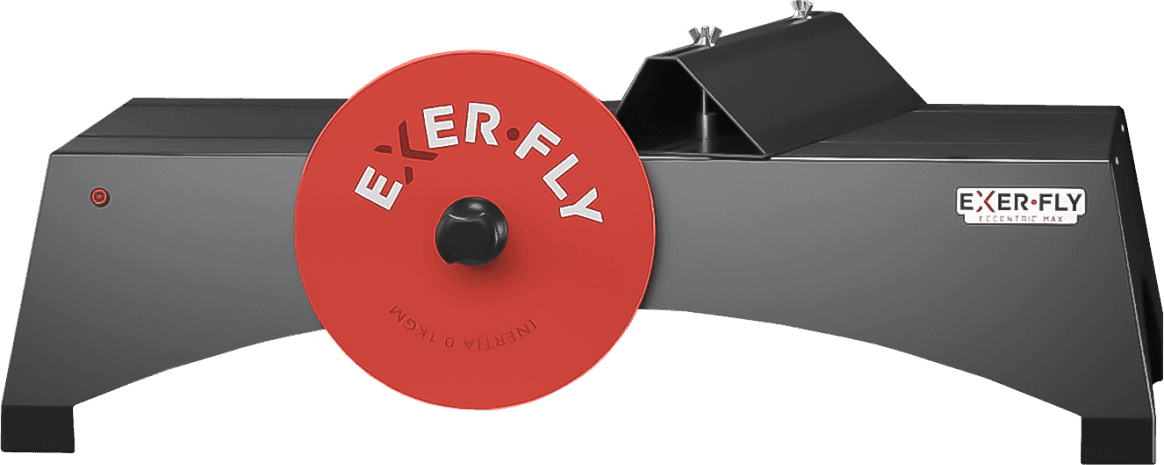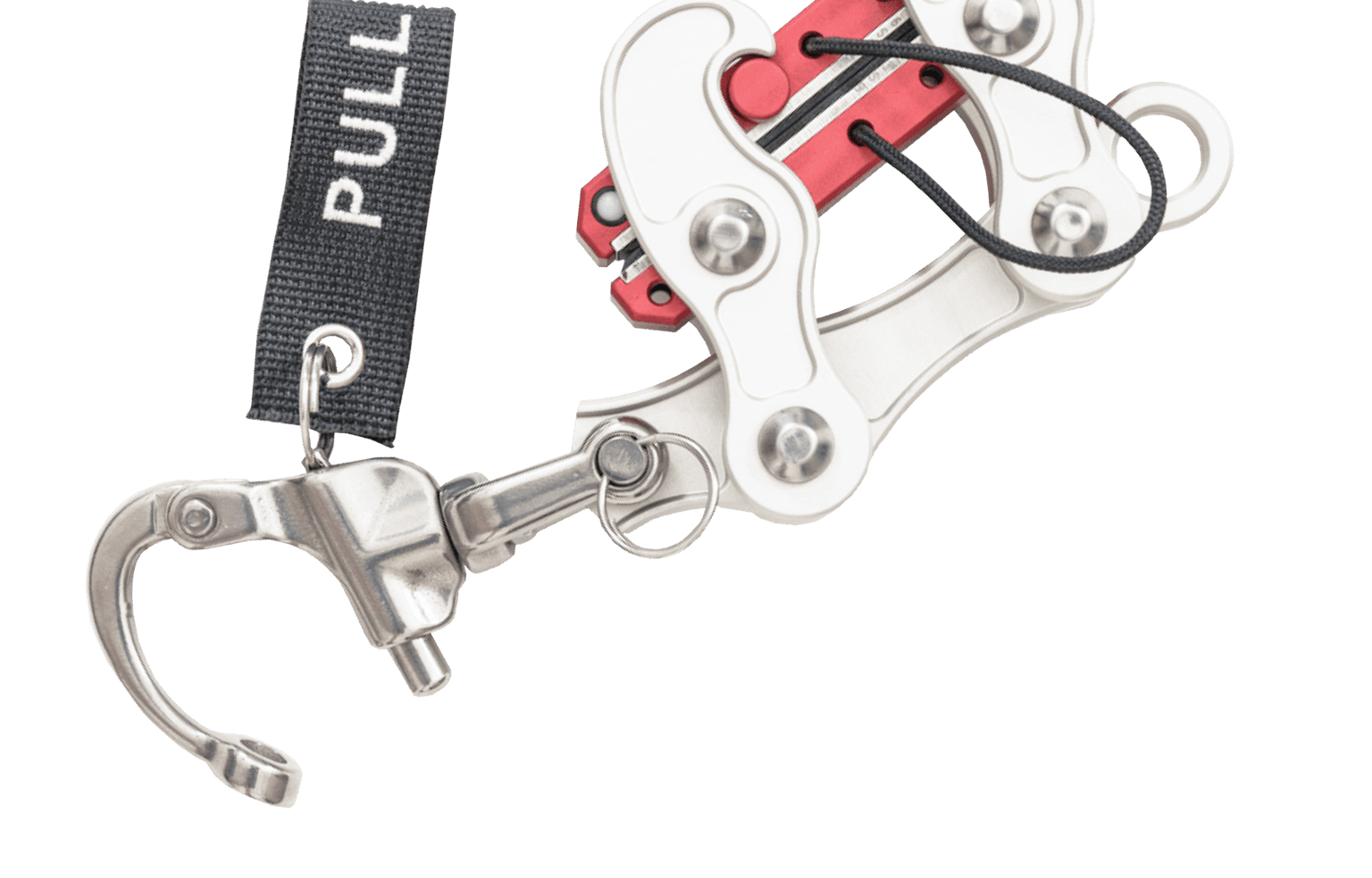
Cardiovascular Responses: Flywheel Resistance Training vs. Traditional Resistance Training
Study Details
Banks, N. F., Rogers, E. M., Berry, A. C., & Jenkins, N. D. (2024). Progressive iso-inertial resistance exercise promotes more favorable cardiovascular adaptations than traditional resistance exercise in young adults. American Journal of Physiology-Heart and Circulatory Physiology, 326(1), H32-H43.
Background and Purpose of the Study
The Exerfly Platform was recently used in a study on the cardiovascular adaptations resulting from different high-intensity resistance training methods.
A lot of research has evaluated the effects of both traditional resistance training (TRT) and flywheel resistance training (FRT) on measures of neuromuscular and athletic performance. But much less has been conducted on how high-intensity TRT and FRT influence cardiovascular adaptations, particularly since high intensity strength training is commonly performed in young adults!
To address this gap, researchers compared the cardiovascular effects of TRT, using barbells and cable stack machines, to a FRT group, which used the Exerfly Platform.

Methods
A sample of 31 young healthy adults (19 women, 12 men) completed the study. They were randomly assigned to one of three groups:
- TRT group
- FRT group
- Control group
All participants completed a battery of assessments before and after the 10-week training period. These included assessments of muscle strength (max torque during an isometric leg extension), body composition, and measures of central arterial stiffness, macrovascular function, and blood pressure reactivity to submaximal exercise.
List of tests performed by the researchers:
- Body Composition (body fat %) through a combination of bioelectrical impedance (to measure total water content) and air displacement plethysmography to measure body density.
- Resting blood pressure, including systolic, diastolic, and mean arterial pressure.
- Resting heart rate
- Cardiovagal Baroreflex Sensitivity
- Heart Rate Variability (HRV)
- Resting blood pressure and heart rate
- Flow mediated dilation (FMD) of the brachial artery as a measure of the macrovascular function
- Carotid-Femoral Pulse Wave Velocity as a measure of central arterial stiffness
- Blood Pressure Reactivity in response to an isometric exercise protocol
- Leg extension isometric strength (maximal voluntary isometric torque)
The Training Protocols
Both training groups (TRT and FRT) completed 3 workouts per week, involving 3 sets of 5 exercises using either traditional equipment (barbell and cable stack machine) or on the Exerfly Platform. The primary exercises during each workout were the squat, deadlift, bench press, and row. One accessory exercise (bicep curl, triceps extension, or glute bridge), was added to each session starting in week 6.
The programs progressed using a linear periodization model, where intensity increased over time as volume decreased. For example, after an introductory week of training, the program progressed from 3 sets at 12 repetition maximum (RM) in week 2, to 3 sets at 4 RM during the final week.
Sets 1 and 2 followed the prescribed rep number. But during set 3, they performed reps until technical failure or until a pre-defined threshold. For TRT, this was 4 reps beyond the prescribed number, and for FRT it was when measured outputs from the Exerfly device dropped to 80% of the set 2 average for consecutive reps. The number of successful reps during set 3 was used to determine increases in load for the next session.
The control group did not perform any resistance training and was asked to maintain their current physical activity habits outside of the study. Additionally, all groups were asked to maintain their current dietary habits, to log their food intake, and to complete a physical activity questionnaire at the end of each week.
Results
Both training groups improved isometric leg extension strength compared to baseline and relative to the control group (TRT: +11.4%; FRT: +9.4%), without a statistically significant difference between TRT and FRT.
However, there were significant differences in the cardiovascular adaptations. More specifically, the TRT group had several significant changes which were indicative of negative adaptations to the cardiovascular system, which were not observed when using the FRT instead.
For example, TRT resulted in more exaggerated blood pressure responses to a submaximal isometric exercise protocol compared to FRT and the control group, a change that is often associated with increased risk of cardiovascular issues in otherwise healthy individuals (4,8). This was accompanied by negative changes in cardiovagal reflex sensitivity and heart rate variability in the TRT group, which was suggestive of altered autonomic nervous system responses.
However, there was no evidence of changes to other cardiovascular markers such as the measures of arterial stiffness, resting blood pressure, or macrovascular function.
Conclusions and Takeaways
Overall, it seems that FRT had statistically similar benefits in isometric strength as TRT, but without the same negative changes in certain measures of blood pressure reactivity and autonomic function.
It is not clear why the differences were noted or the long-term implications of such a finding, and more research is needed to determine the hemodynamic effects of FRT compared to other resistance training methods. However, these results provide additional evidence that FRT can be a safe and effective training method for a wide range of individuals.
For example, researchers have previously found FRT to have promising effects for stroke patients (6,7), provide beneficial effects on health and functional markers when combined with aerobic or interval training (2), and for improving neuromuscular performance and functional performance in older adults (5). Additionally, recent studies have found FRT to be well-tolerated by patients with severe hemophilia (3).
So, while FRT has been well-established as an effective method for improving measures of neuromuscular performance such as muscle strength, power, and hypertrophy, it is becoming readily apparent that the benefits of FRT can be safely and effectively applied to a massive variety of populations!
Want to learn more about Exerfly FRT? Check out our other blogs and content, and feel free to contact us!
References
- Banks, N. F., Rogers, E. M., Berry, A. C., & Jenkins, N. D. (2024). Progressive iso-inertial resistance exercise promotes more favorable cardiovascular adaptations than traditional resistance exercise in young adults. American Journal of Physiology-Heart and Circulatory Physiology, 326(1), H32-H43.
- Bruseghini, P., Calabria, E., Tam, E., Milanese, C., Oliboni, E., Pezzato, A., ... & Capelli, C. (2015). Effects of eight weeks of aerobic interval training and of isoinertial resistance training on risk factors of cardiometabolic diseases and exercise capacity in healthy elderly subjects. Oncotarget, 6(19), 16998.
- Calatayud, J., Pérez‐Alenda, S., Carrasco, J. J., Cruz‐Montecinos, C., Andersen, L. L., Bonanad, S., ... & Casaña, J. (2021). Feasibility, safety and muscle activity during flywheel vs traditional strength training in adult patients with severe haemophilia. Haemophilia, 27(1), e102-e109.
- Caselli, S., Serdoz, A., Mango, F., Lemme, E., Vaquer Seguì, A., Milan, A., ... & Pelliccia, A. (2019). High blood pressure response to exercise predicts future development of hypertension in young athletes. European Heart Journal, 40(1), 62-68.
- Čokorilo, N., Horvatin, M., Đorđević, D., Stanković, M., & Pekas, D. (2022). Flywheel Training in Older Adults—A Systematic Review. Sustainability, 14(7), 4137.
- Fernandez-Gonzalo, R., Fernandez-Gonzalo, S., Turon, M., Prieto, C., Tesch, P. A., & García-Carreira, M. D. C. (2016). Muscle, functional and cognitive adaptations after flywheel resistance training in stroke patients: a pilot randomized controlled trial. Journal of Neuroengineering and Rehabilitation, 13, 1-11.
- Fernandez-Gonzalo, R., Nissemark, C., Åslund, B., Tesch, P. A., & Sojka, P. (2014). Chronic stroke patients show early and robust improvements in muscle and functional performance in response to eccentric-overload flywheel resistance training: a pilot study. Journal of Neuroengineering and Rehabilitation, 11, 1-10.
- Manolio, T. A., Burke, G. L., Savage, P. J., Sidney, S., Gardin, J. M., & Oberman, A. (1994). Exercise blood pressure response and 5-year risk of elevated blood pressure in a cohort of young adults: the CARDIA study. American Journal of Hypertension, 7(3), 234-241.






